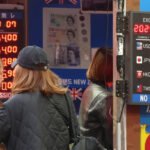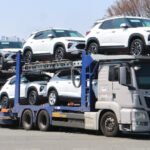
South Korea is planning a sweeping restructuring of its steel industry, with government-backed plans for production cuts and an increase in the output of higher-grade specialty products, as global oversupply and Chinese competition put strains on one of the country’s core manufacturing sectors.
The Ministry of Trade, Industry and Energy will unveil a restructuring blueprint as early as the end of this month, based on recommendations from the steel industry competitiveness task force, a body of government officials, academics and consultants, including Nomura Securities, people familiar with the matter said on Thursday.
The task force has conducted a comprehensive survey of domestic and global demand for steel products across shipbuilding, automotive and construction, alongside assessments of production capacity.

At the heart of the plan are reductions in output of reinforced bar, known as rebar, thick plates, section steel and flat steel, and a state-backed drive to upgrade product quality.
DRASTIC CUTS OR SHUTDOWNS
The move follows a similar restructuring effort by the country’s petrochemicals makers to cut up their naphtha-cracking capacity by up to 25% amid an industry slowdown.
Steel companies that fail to meet new standards for strength, heat resistance and durability would face pressure to scale back production or even shut plants, with incentives offered for mergers and asset consolidation, sources said.

Officials are also weighing exemptions from competition rules to allow coordinated capacity cuts, they said.
“About 40% of domestic mills are unlikely to meet the benchmarks we will set,” said a task force member. “Roughly 10 to 20% could face direct cuts or closure.”
Blast and electric furnaces are expected to be spared, given the efficiency of operators such as POSCO, Korea’s top steelmaker, and their importance to national supply chains, sources said.
‘SANDWICH TRAP’
The urgency reflects the sector’s sharp downturn.

POSCO’s Pohang Steel Works last year posted its first annual loss since the site was founded in 1973.
Smaller domestic rivals have seen utilization rates slump below 80%, a threshold industry officials consider a point of no return.
Domestic demand has weakened beyond even the COVID-19 pandemic levels, while imports of cheaper Chinese and Japanese products are on the rise.
US trade measures, including higher tariff rates, are further clouding export prospects.
Analysts said Korean steelmakers are in a long-standing “sandwich trap”: unable to match Chinese rivals on price and falling short of Japan in high-end grades.
“Competing on tons no longer works. The fight is shifting to margin per ton,” said an industry executive.

SPECIALTY PRODUCTS
The government and industry see opportunity in moving from commodity steel to niche, higher-margin products such as earthquake-resistant rebar, ultra-high-strength beams for skyscrapers, or specialty plate for LNG carriers and ammonia tankers.
Demand is also expanding in defense and energy, from armored steel to alloys for small modular reactors and hydrogen plants.
Japan’s experience is being cited as a model: combining capacity cuts with upgraded products and tighter standards that kept out low-cost imports while locking in global customers.
Seoul is considering similar measures, including stricter rebar specifications that would automatically exclude Chinese suppliers.
GOVERNMENT AIMS TO FACILITATE SMOOTH EXIT FOR WEAKER ONES
Yet the shift will require costly reinvestment, analysts said.
Officials estimate that 30–40% of the current facilities fall short of the standards envisaged, with a fifth likely to shut unless capital is injected.
POSCO may cut back on long products such as rebar and wire rod, while Hyundai Steel Co. could concentrate on automotive sheet and Dongkuk Steel Mill Co. on structural sections.

Industry officials said medium-sized producers focused on rebar face the toughest outlook.
To ease the transition, policymakers are exploring a “steel co-prosperity fund,” through which stronger mills could receive state support to acquire and close weaker rivals’ assets while absorbing their workers, sources said.
By doing so, the government expects weaker firms to manage exits gradually, limiting the employment shock while steering the industry into higher-value niches, they said.
A government source said officials frame the next five years as a “golden time” to reset the industry’s trajectory.
Whether Seoul can pull off a Japanese-style reinvention, and shift from volume to value before oversupply deepens, will determine if Korea’s steelmakers can remain global players rather than casualties of China’s glut, he said.
By Sang-Hoon Sung
uphoon@hankyung.com
In-Soo Nam edited this article.















